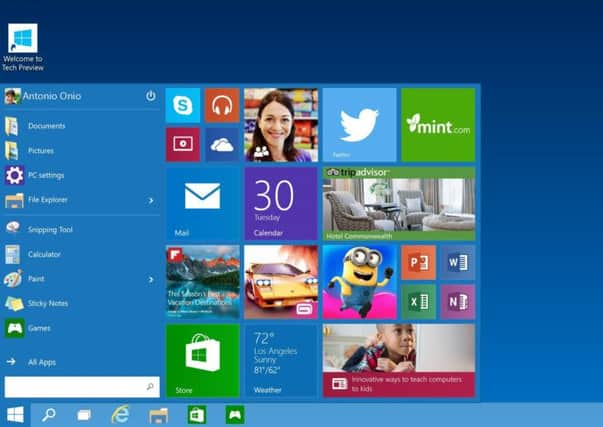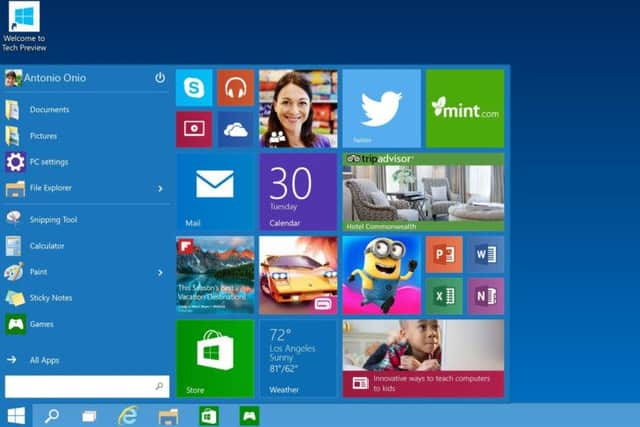Tech Talk: After 8, it’s a whole new Windows from the Werther’s Original of computing


Unlike Apple, which typically announces new software just a few weeks before launch, Windows 10 is still on the test bed, and it will be over a year before it makes its way into the shops - yet its announcement renders the Windows PCs and phones currently in shops prematurely obsolete. Also unlike recent Apple software, it won’t be free - which means most users will see it only when - or if - they choose to buy a new PC.
If Apple is the Ferrero Rocher of computing, Microsoft is the Werther’s Original. Its portfolio of programs - Windows and Word, especially - were designed for an earlier era of offline technology. That’s why the company now wants to “unify” its software, so that it works seamlessly no matter what sort of device you’re using: mobile phone, tablet or PC. Windows 8 tried to do this but failed because it required users to switch between modes. The new version, says Microsoft, will be clever enough to do so automatically.
Advertisement
Hide AdAdvertisement
Hide AdBut unless you choose to buy a hybrid laptop-cum-tablet, it’s functionality you’ll never need.


Another reason for the failure of Windows 8 to break the mass market - it is estimated to be running on only 13 per cent of the world’s PCs - was the initial absence of a start menu, the familiar tool with which we navigate our desktops. So Windows 10 will come complete with a handsome-looking menu that incorporates the “tile” design of Windows phones.
Microsoft has a poor record in Windows releases: Not only version 8 but also the earlier Vista and ME editions all failed to take off. Around three-quarters of users still prefer Windows 7 and Windows XP, even though the latter is no longer officially supported. The reasons are obvious: both work reasonably well so why spend good money trying to fix something that isn’t broken?
If you do decide to buy a new PC late next year, or - less likely - upgrade your existing machine, here’s what you can look forward to...
Advertisement
Hide AdAdvertisement
Hide Ad• A “task view button” that displays all your running apps and files, so you can switch between them. (You can already do this in Windows by pressing Ctrl-Alt-Delete.)
• A new “quadrant layout” that arranges four apps neatly on the same screen. (You can already do this manually.)
• The ability to switch between more than one desktop screen, so you can group related activities together and reduce clutter. (Apple Mac users can already do this and I remember an app that did it on Windows 3.1, 20 years ago.)
All of which suggests that despite the jump in version numbers, Microsoft is still taking baby steps with Windows 10. Welcome to a leap into the known.